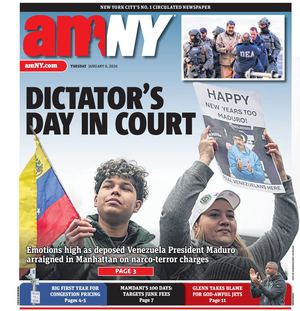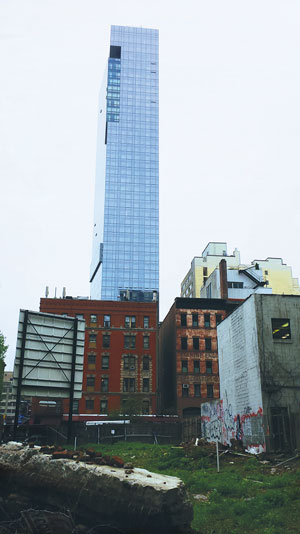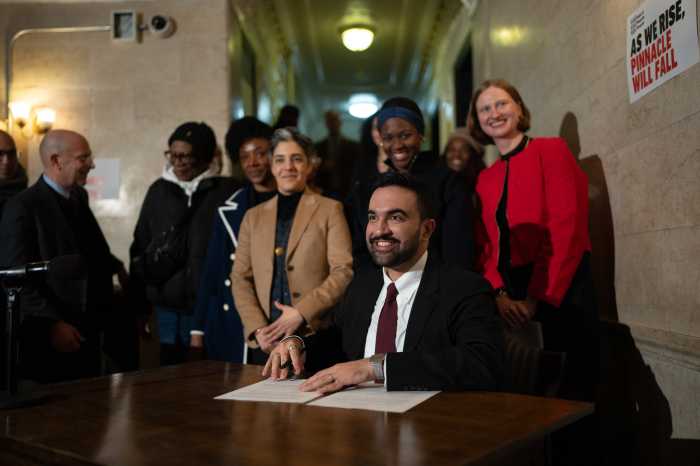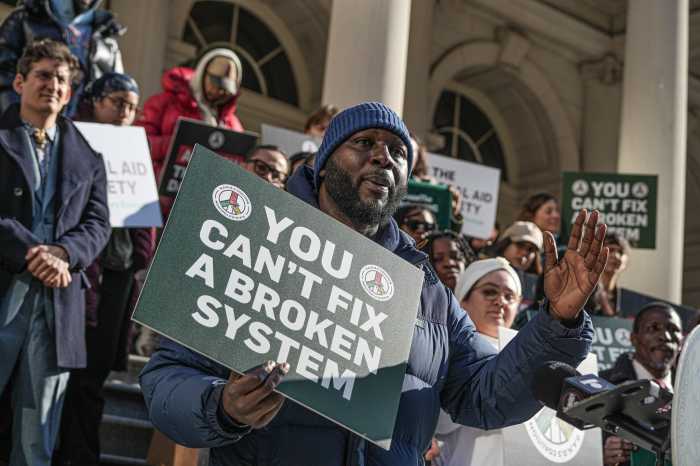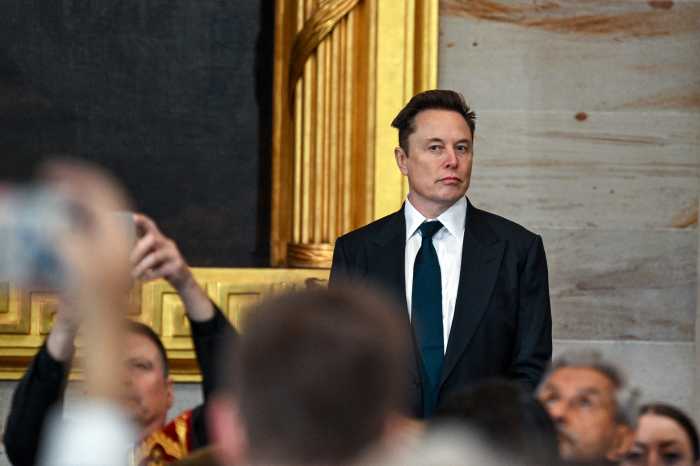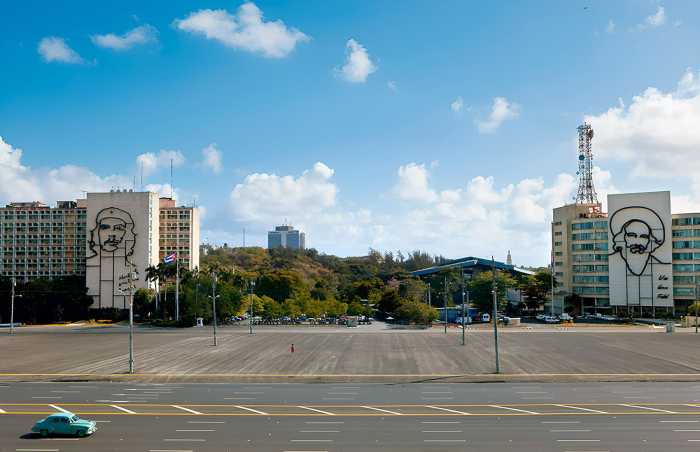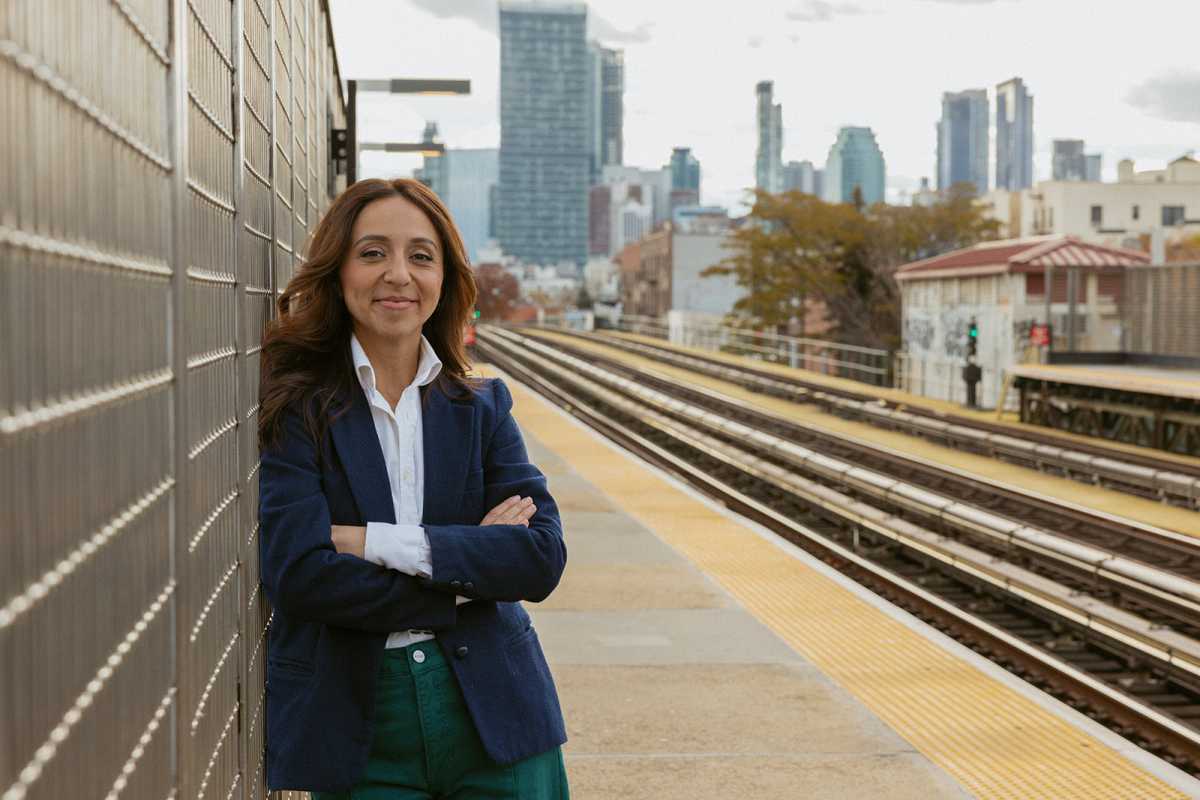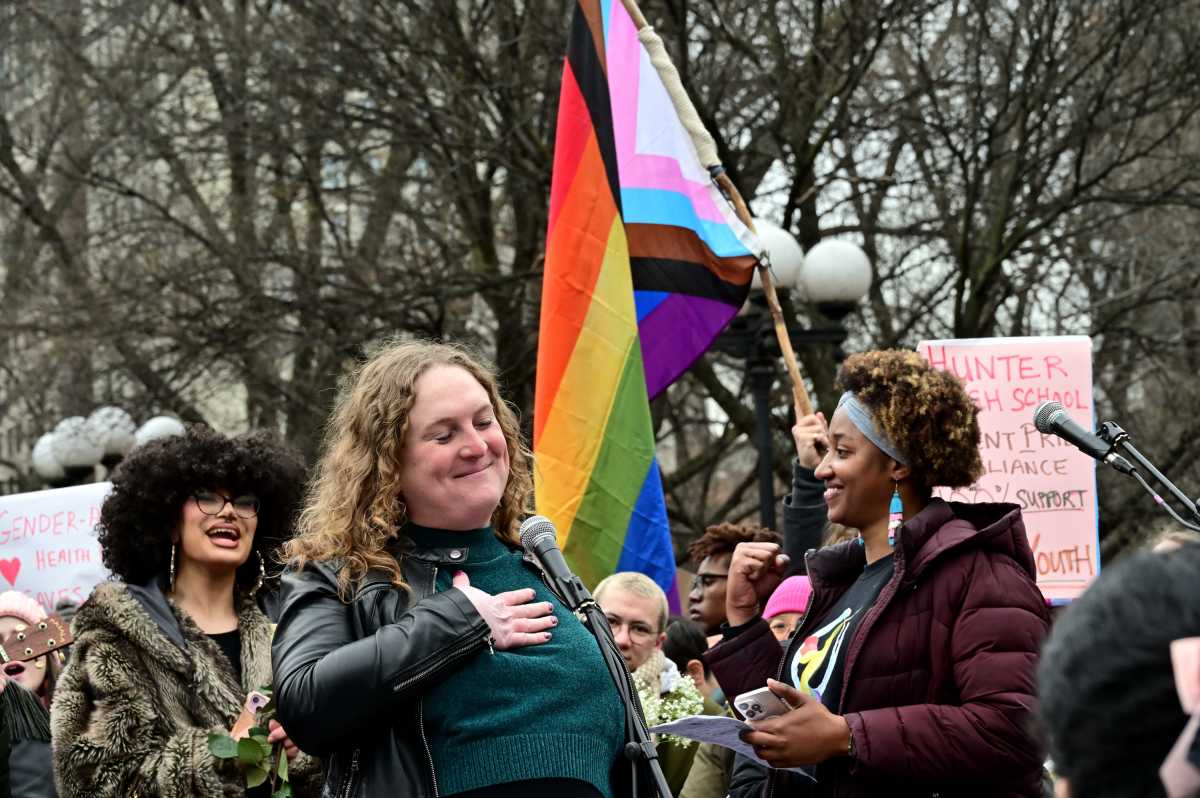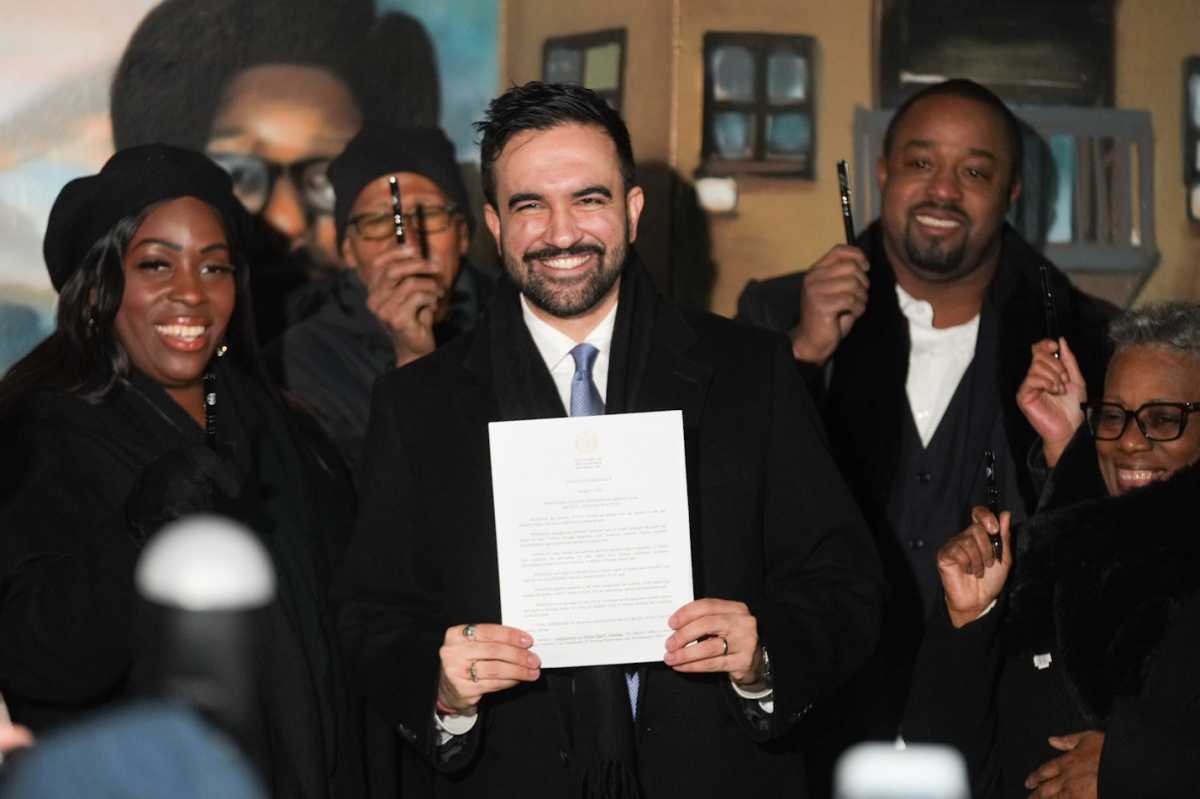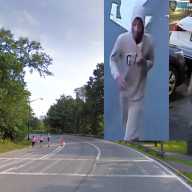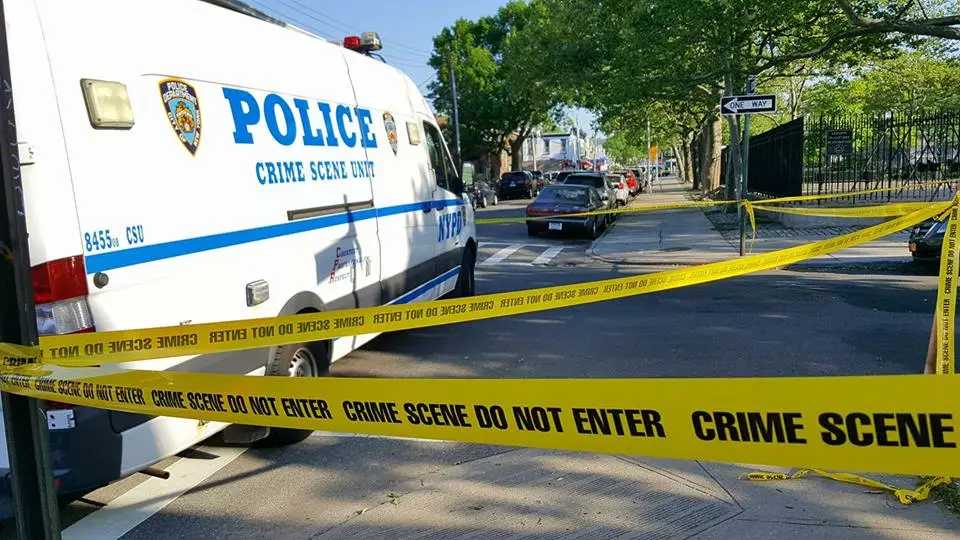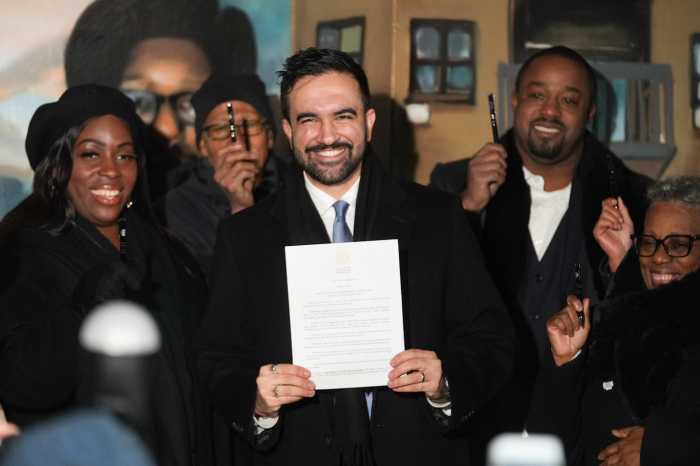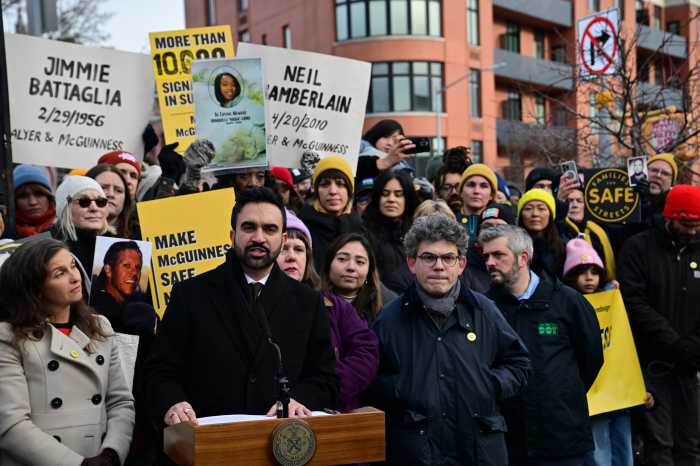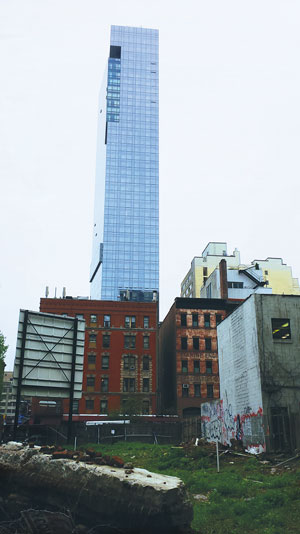
BY ANDREW BERMAN | The recent news that the Trump Soho Condo-Hotel is going into foreclosure and will be sold inspires some reflection.
How did we get saddled with this 454-foot-tall eyesore anyway, and how was something so clearly wrong ever allowed to be built?
The story starts when The Donald first announced plans for the Trump Soho on the finale of “The Apprentice” in May 2006. Condo-hotels were a new hybrid offering hotel services in buildings where individuals bought units to live themselves, rent out for income or use as a second or third home. Successful elsewhere, condo-hotels were just starting to enter the New York City market. But this was to be the first one in a New York City “manufacturing zone,” where new residences or “residential hotels” were prohibited by law.
The Greenwich Village Society for Historic Preservation, and many others in the community, immediately slammed the plan. Not only would the enormous, unsightly glass tower be jarringly out of place, but the “condo-hotel” setup made it illegal.
These would, in effect, be residences, which violated the zoning — not a “transient hotel,” where rooms are rented on a daily basis for limited periods of time, which the zoning allowed. If the city just followed the law, we argued, the objectionable monument to The Donald’s ego could not be built; it would either have to be changed to a straight transient hotel, which meant in all likelihood it would not be built (the entire financing scheme was based upon the sale of individual condo units), or they would have to apply for a zoning change or variance to get permission for the condo-hotel usage. Such an application could be rejected, or could be approved only if other objectionable elements of the development, such as its height, size and design, were altered.
Unfortunately, the city did not see it that way, and insisted that the planned development was legal and could move ahead as it was — even as the developer was caught repeatedly advertising the Trump Soho as a “residence;” as prospective buyers were told how they could live in their units permanently, in contravention of the zoning; as illegal work on the building resulted in fatal accidents; as a long-forgotten 19th-century abolitionist church burial ground underneath the site was disturbed by the construction; and as some of the partners in the project were found to have some pretty serious criminal backgrounds.
It didn’t help that then-City Council Speaker Christine Quinn and Borough President Scott Stringer agreed with the city that the project was legal.
The window-dressing response from the city and elected officials who supported the project was that an agreement with the developers (who had already shown themselves to be less than upstanding and trustworthy citizens) would require that all condo owners stay in their units no more than 120 days per year, and no more than 29 days for any 36-day period. Of course, to us this still sounded like something other than a “transient hotel” (the only type legally allowable here).
But even these meager restrictions seemed impossible to enforce or monitor. The city and elected officials, however, claimed that the Trump Soho would be required to have an independent outside firm audit their records to see if these provisions were being followed, and those audits would have to be submitted to the city, with penalties for lack of compliance.
G.V.S.H.P. supported a lawsuit by the Soho Alliance to get the building permits for the Trump Soho overturned before it could be built. Then-Mayor Bloomberg spent city tax dollars to defend the Trump Soho in court. He succeeded before a panel composed entirely of his appointees. Unfortunately, the community did not have the resources for the very expensive legal battle that would have been required for an appeal. (Also, the building was close to completion by this time.)
But G.V.S.H.P. and many other angry residents were there to protest the day the Trump Soho opened. The police insisted we could only demonstrate several dozen yards away from the building entrance, across two streets — where we would be out of view of the guests arriving for the opening — and threatened us with arrest if we disobeyed. We continued to highlight just how much this 454-foot-tall sore thumb was loathed in the community, and how clearly it violated the zoning rules meant to govern development in our neighborhoods.
Whether it was the bad publicity, or poor management, or a combination of the two, the Trump Soho was never able to sell. Buyers even sued to be released from their contracts, and according to press accounts, no more than one-third of the units were ever purchased. But the city and politicians remained unabashed in their support for the Trump Soho for some reason.
G.V.S.H.P. discovered that the Department of City Planning had begun to categorize the Trump Soho as a “residence” after it was built, even though the city insisted “residential” uses would not be allowed there. And when G.V.S.H.P. asked the city, Speaker Quinn and Borough President Stringer for any and all records they had regarding the findings of the legally required audits of the Trump Soho, we were stonewalled for months, without even the courtesy of a reply.
Only after a Freedom of Information Request was filed by G.V.S.H.P. in 2013 did we uncover that not a single legally required audit had ever been filed by the Trump Soho; that neither the city nor any of the elected officials involved in drawing up the agreement ever asked for one; and that no penalties had ever been levied against the Trump Soho for its failure to obey the “agreement” that had been touted as the guarantee of the development’s legality.
G.V.S.H.P. is pushing the new mayor to do a better job than his predecessor of enforcing the law for the Trump Soho (or whatever it will soon be called once sold). We have called upon him to ensure that the required audits be submitted and inspected on a regular basis. We wish we could, realistically, ask Mayor de Blasio to undo the mistakes made by the prior administration and order the building taken down. But the Trump Soho remains an object lesson in government oversight gone wrong.
If this debacle shows anything, it is that we must make sure government officials know they will be held accountable for decisions such as these. There were numerous ways in which the law should have prevented Trump Soho from ever blighting our skyline or our streetscape. But city officials chose to ignore the law, and foist this egregious, ill-advised development upon us. We should always remember that, and choose our officials carefully, knowing what a profound effect their decisions will have upon our city and our neighborhoods.
And we should always make clear that this community pays close attention to these things, and does not easily forget.
Berman is executive director, Greenwich Village Society for Historic Preservation
